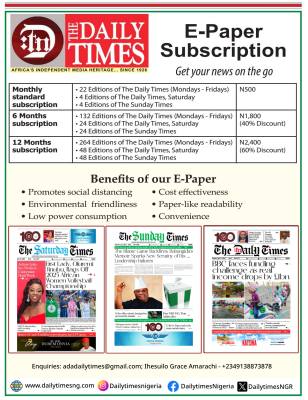World AIDS Day: 1.8m Nigerians live with HIV – NACA

By Doosuur Iwambe
At least 1.8 million Nigerians are currently living with Human Immuno-deficiency Virus (HIV) that causes Acquired Immune Deficiency Syndrome (AIDS), the National Agency for the Control of AIDS (NACA) has said.
In a statement to commemorate World AIDS Day, the agency said that there is a decline in HIV/AIDS deaths and new infections nationwide, unlike in other parts where the scourge is rising.
The agency said the Federal Government had spent more than N18 billion in three years on HIV capital projects, and HIV no longer kills now as long as people know they have it.
“We have an estimated 1.8 million, and we are working with our data to know the actual number that is now very active, that is, they are alive and receiving medications.
“Those are the ones we count because they are the ones we know, alive, on our register, and they know they have HIV.
“Those that are no longer alive but are in our register, we will take them out, and at the end of the day, we will have an alternative number.
“So, we are working on our data to get that exact number but our estimation is less than two million people that are currently living with HIV in Nigeria,” NACA’s Director General, Dr Gambo Gumel Aliyu said.
Also speaking, the Deputy Director of Prevention and Social Behaviour Change Communicator at NACA, Dr Daniel Ndukwe, said the agency reviewed the National Strategic Plan for the country.
Ndukwe said the new plan was better, with a more informed response than the previous one, adding that the plan has a gender dimension to HIV.
He stressed that women were more vulnerable to HIV due to their biological makeup and social and cultural factors.
Meanwhile, the Joint United Nations Programme on AIDS (UNAIDS), yesterday, said, in 2021, 650,000 people were lost to AIDS and 1.5 million people newly acquired HIV, while there were an estimated 38.4 million (33.9–43.8 million) people living with HIV at the end of 2021, two-thirds of whom (25.6 million) are in Africa.
Also, the United Nations Children’s Fund (UNICEF) said some 110,000 youths under age 19 died last year from AIDS-related causes, noting that coupled with 310,000 newly infected, the total number of young people living with HIV stands at 2.7 million.
UNICEF warned in its latest global snapshot on children, HIV and AIDS, that progress in HIV prevention and treatment has nearly flattened over the past three years, with many regions still not at pre-pandemic service coverage.
On her part, the Regional Director for Africa Matshidiso Moeti said, the African Region currently has about 25.6million people living with HIV.
She however said that progress has been made over the past decade thereby, reducing new infections by 44% and AIDS-related deaths by 55%.
Dr Moeti in her message said the 2022 theme; “Equalize” stressed the need for everyone to address the inequalities driving the epidemic and holding back progress in ending AIDS.
“This progress was made because WHO and partners advocated and supported the expansion of new HIV prevention and treatment technologies; provided guidance on combination HIV prevention, testing and treatment; built capacity in countries to improve data availability and quality; increased access to affordable medicines, diagnostics and health technologies; and support national HIV treatment catch-up plans in the west and central Africa.
“Even so, the progress is slow, and inequalities persist in HIV prevention, testing and treatment services. Data from WHO on the global HIV response reveals that since the start of COVID-19 and other global crises, progress against the HIV pandemic has wavered, resources have decreased, and millions of lives are at risk.
“Four decades into the HIV response, inequalities persist for the most basic services like testing and treatment.
“For example, HIV prevention programmes reach only 40% of adolescent girls and young women. Only one in three key populations, who are particularly vulnerable to HIV, have regular access to HIV prevention services and they still face significant structural barriers, including criminalisation, discrimination and stigma. They include sex workers, men who have sex with men, people who inject drugs, people in prisons and detention and transgender people.
READ ALSO: Synergy needed to address disruptions in…
“With only eight years left to the 2030 goal of ending AIDS as a global health threat, coordinated action is required to stop the effects of the epidemic, with a precise focus to reach those most affected—especially children, adolescent girls, women and key populations.
“At the United Nations General Assembly high-level meeting on AIDS in 2021, world leaders adopted the Political Declaration on HIV and AIDS: Ending Inequalities and Getting on Track to End AIDS by 2030.
“The Heads of State and Government committed to ending all inequalities faced by people living with – and affected by – HIV in communities and countries, which are barriers to ending AIDS”, she said.








